From the majestic Snowy Owl to the dainty White-crowned Sparrow, nature’s avian palette is filled with a dazzling array of white birds.
Whether you’re a seasoned birdwatcher or just beginning to explore the feathered world, this article will introduce you to 20 types of white birds that are sure to capture your imagination.
| Image | Name |
|---|---|
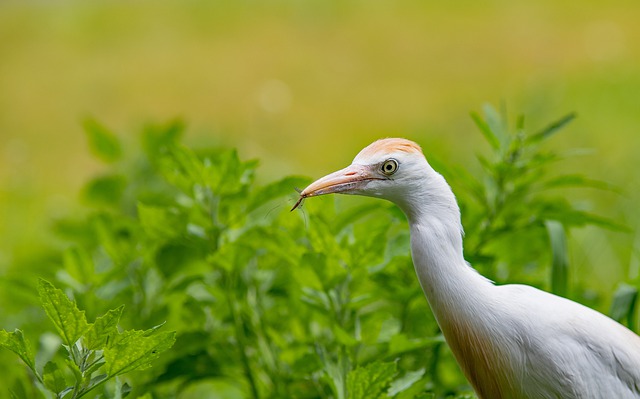 | Cattle Egret |
 | White Dove |
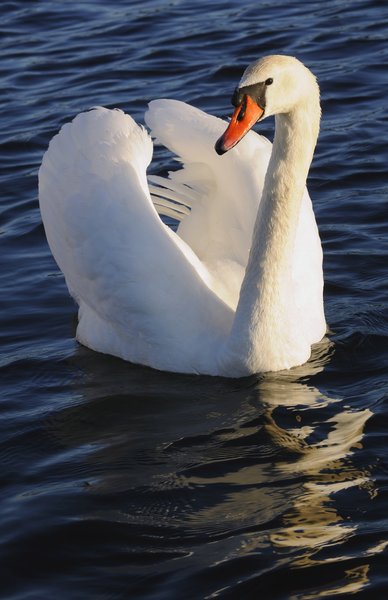 | Mute Swan |
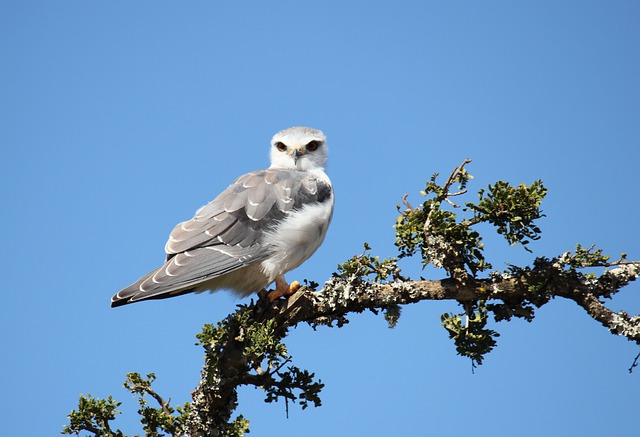 | White-Tailed Kite |
 | White Tern |
 | American White Pelican |
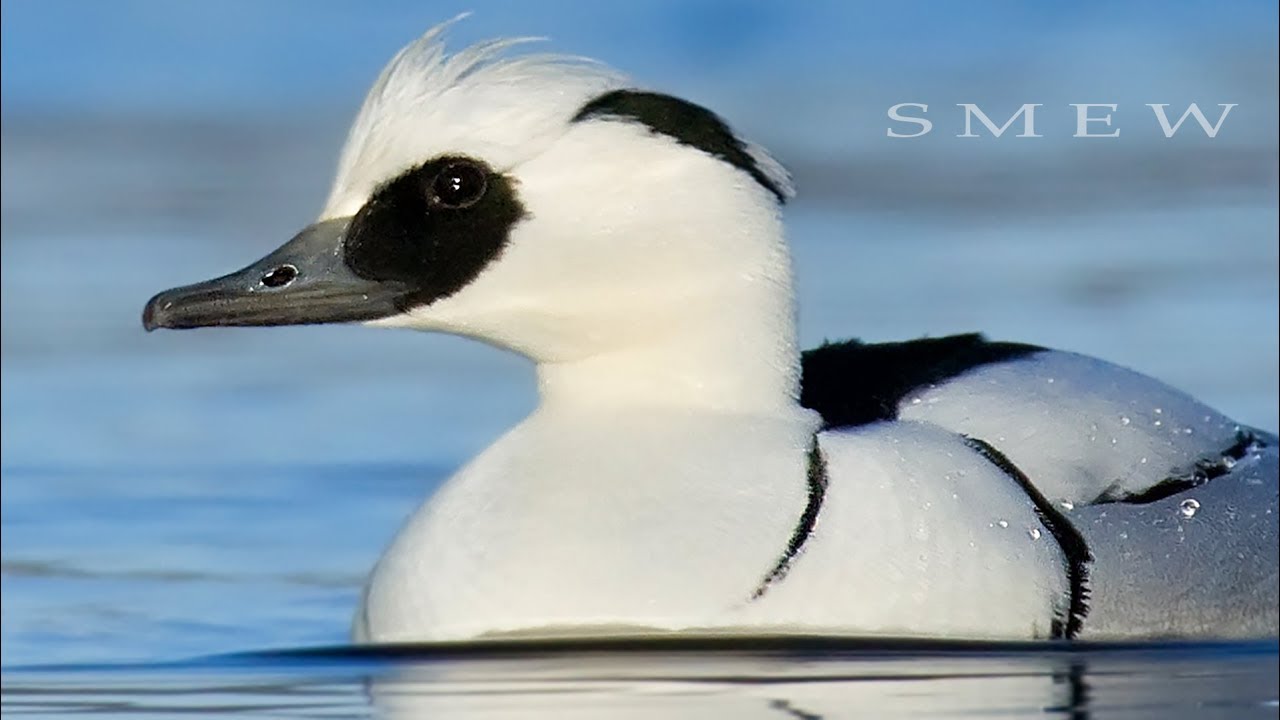 | Smew |
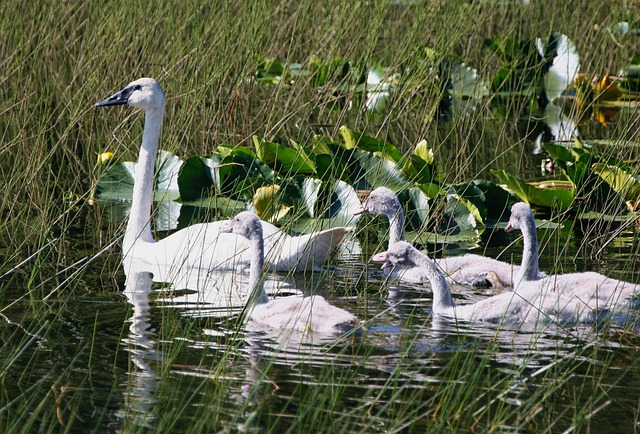 | Trumpeter Swan |
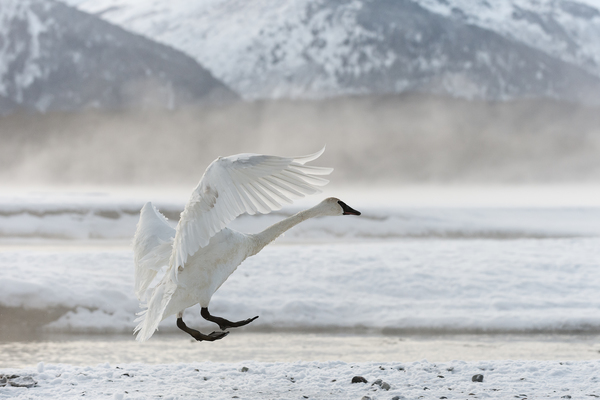 | Tundra Swan |
 | Wood Stork |
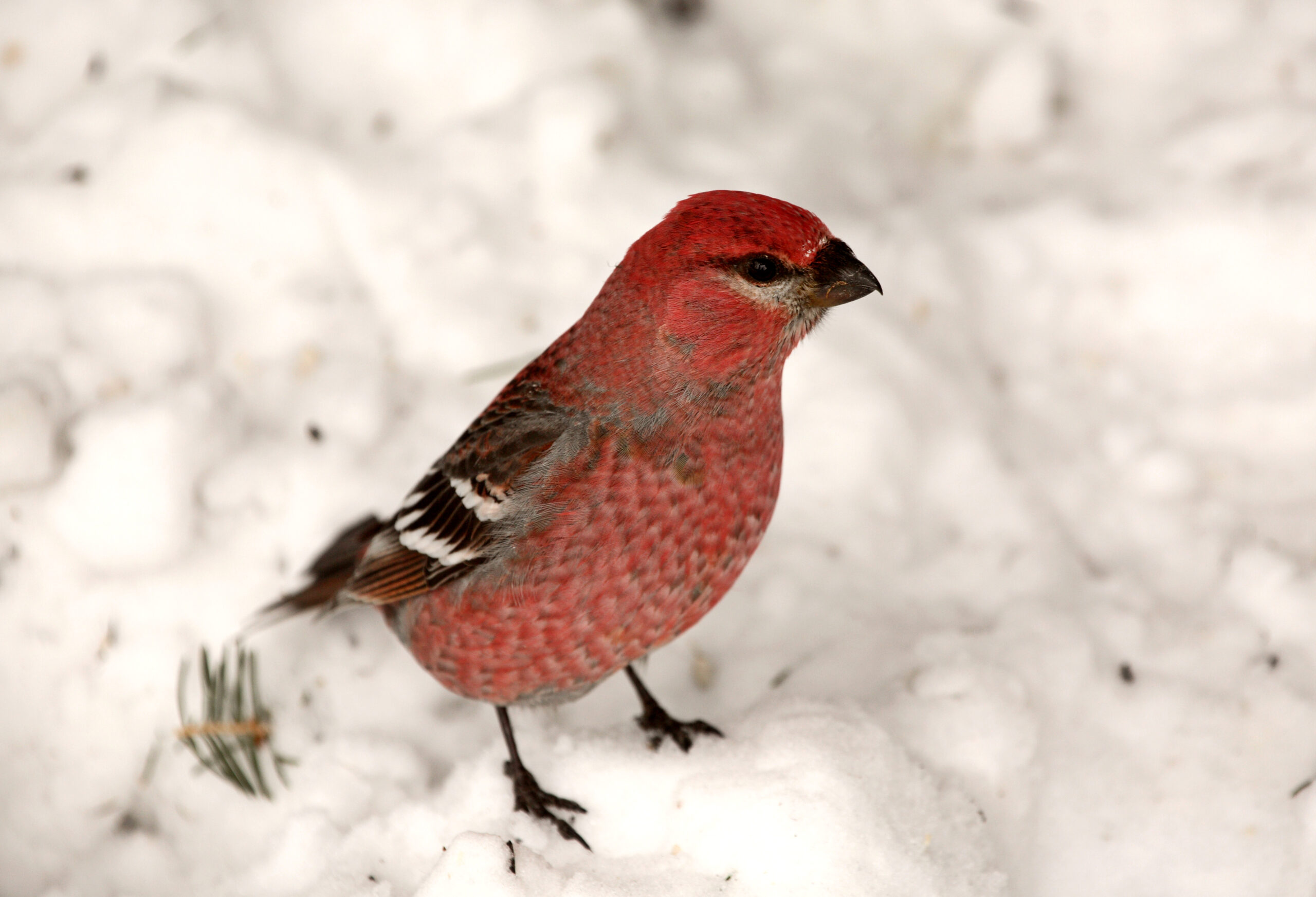 | Red Bills Tropicbirds |
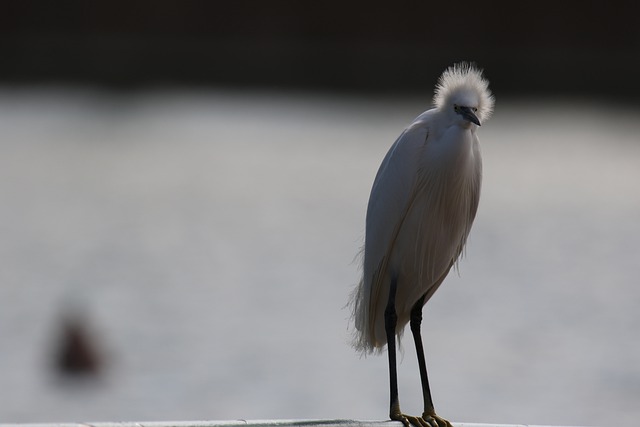 | Snowy Egret |
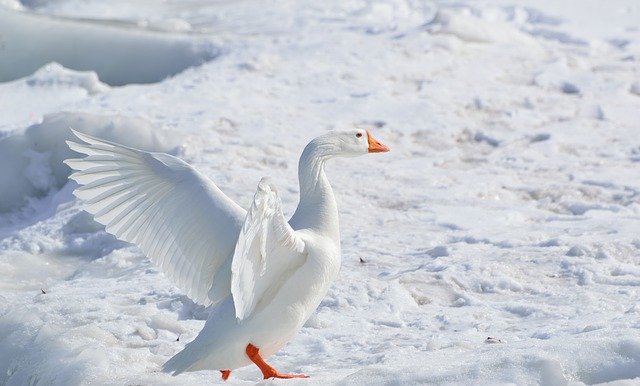 | Snow Geese |
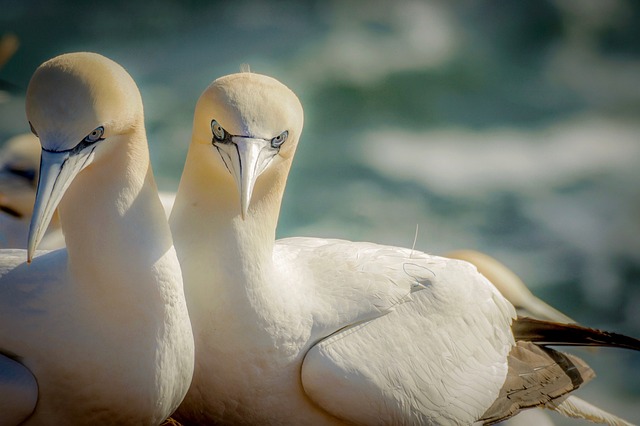 | North Gannet |
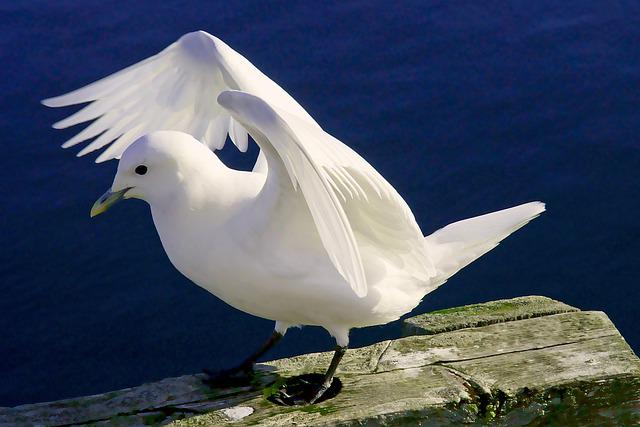 | Ivory Gull |
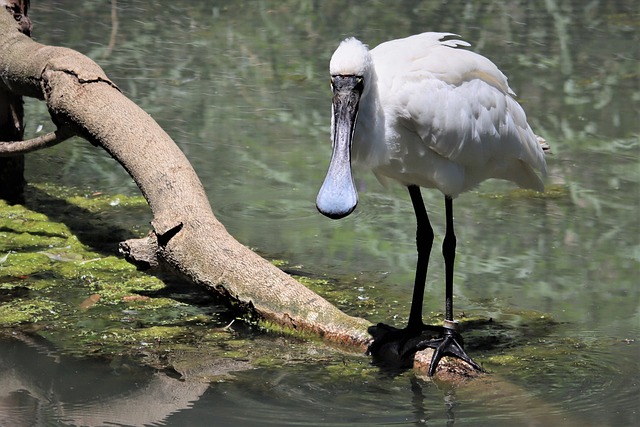 | Royal Spoonbill |
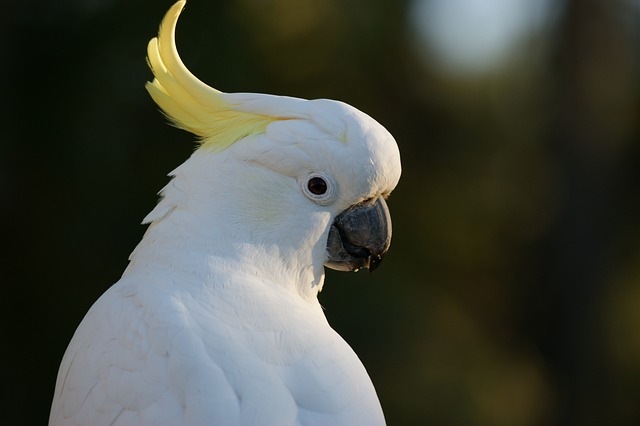 | White Cockatoo |
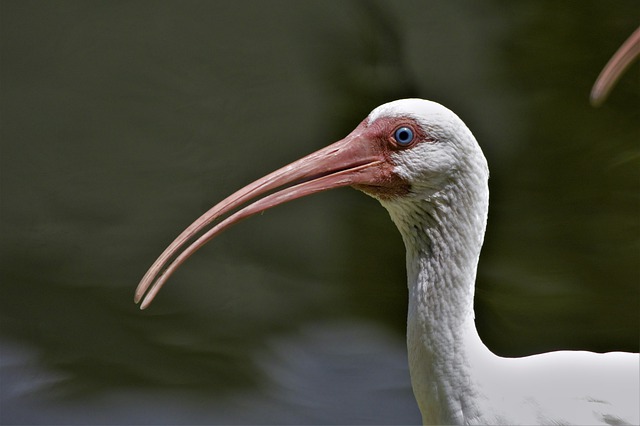 | White Ibises |
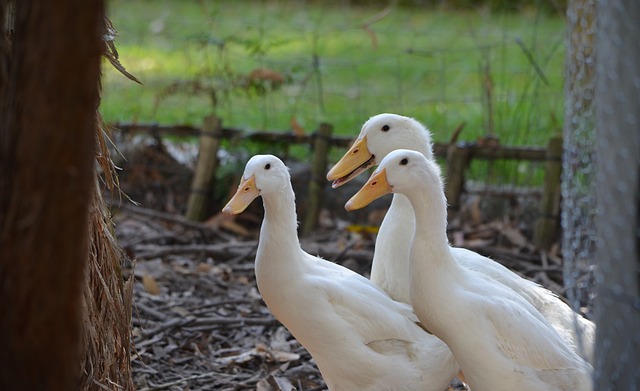 | American Pekins |
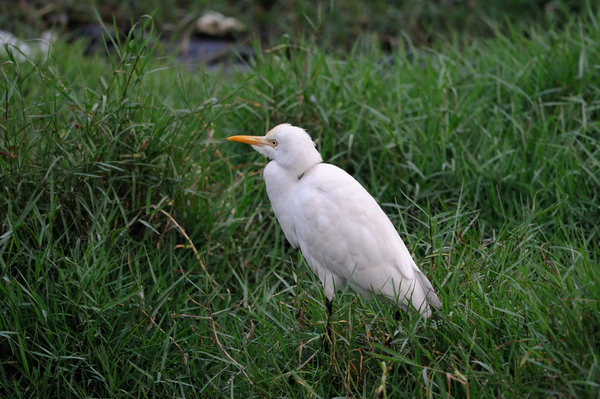 | Little Egret |
Types of White Birds
Although many species of birds have white in their feathers, those that are almost all white are rarer.
Most of these snowy birds like to set up housekeeping near bodies of water, whether it be salt water, fresh water, or snowy terrain.
Their white plumage assists them in blending in with their surroundings; therefore, they evolved that way.
1. Cattle Egret

The average size of a cattle egret is 17 to 23 inches. Their wing span is between 34.3 and 39 inches, and they weigh 9.5 to 18.2 ounces.
They hunch down and have short, powerful necks in comparison to other egrets.
In its non-breeding state, the cattle egret is primarily white, except for the yellow of its beak and the greyish yellow of its legs.
In preparation for mating, they develop a halo of golden yellow plumage on their back, breast, and head.
The cow egret is a widespread species with origins in Africa and southern Spain.
It is also seen in Australia and, to a lesser degree, South America.
The principal ecosystems in which this white bird thrives are grasslands, wetlands, and woods.
Cattle egrets tend to nest in the same areas as colonies of other tiny species of herons because of the high quality of social contact that occurs between the birds of both species.
Nesting locations may range from large trees to low-lying bushes and even tiny trees.
Both parents gather sticks and twigs to build a shallow, haphazard bowl for the nest to sit in.
Clutches range from three to four eggs.
The duration of the incubation period is around four weeks.
Grasshoppers, crickets, and flies are among the favorite foods of cattle egrets.
Frogs, spiders, and moths are among the other animals they may consume.
On occasion, they’ll eat snakes or fish.
2. White Dove

The typical white dove weighs 5.4 ounces and has a body length of 12 inches.
You should have little problem recognizing this species because white doves are sometimes released in large flocks for rituals such as funerals, weddings, and public celebrations.
Migratory flocks of white doves spend the colder months of the year in Central America and the Caribbean.
They spend all their time there, with occasional sojourns to Texas and Southern Canada.
Their natural settings might range from urban neighborhoods to saguaro and mesquite groves to riverside woods.
The male white dove is responsible for selecting the concealed perch or tree crotch where the female will lay her eggs.
Nests are bulky, shallow, and constructed from twigs, measuring around 7.2 inches in width and 3.7 inches in height.
White doves like a wide variety of foods, including fruit, vegetables, pellets, seeds, and even the occasional unusual human delight.
3. Mute Swan

The adult mute swan has a length of 48 to 66 inches and a wingspan of 78 to 94 inches.
The maximum height of this bird is 48 inches.
Mute swans, with males averaging 27 pounds and females 34 pounds, are among the biggest great white birds in the sky.
Although their feathers are white, their necks and heads are stained orange or dark brown.
The mute swan may be seen in a wide range of waterways, including estuaries, lakes, and ponds.
Nesting places for these birds may be found in the Pacific Northwest, Virginia, and southern New England and can be near or on saltwater ponds, freshwater, or brackish water.
Mute swans will nest on a little peninsula with a densely forested shoreline or on a small to medium-sized island.
Nests may be made of everything from twigs to stones to cattails to reeds to cordgrasses to rushes to sedges to grasses to bulrushes.
It’s possible that there are dead plants in the nest cup.
Aquatic vegetation makes up the bulk of a swan’s diet.
In addition to frogs, worms, and small fish, they also devour the mollusks that cling to the vegetation.
These massive white birds thrive in regions where the grass is kept short and they also like open grasslands.
4. White-Tailed Kite

The white-tailed kite may range in length from 14 to 18 inches and weigh between 8.8 and 13.5 ounces.
Its wingspan can reach 35 to 41 inches.
The bird is mostly white, with the exception of its shoulders and wingtips, which are black (black).
Although they are most common in Chile and Argentina, white-tailed kites may also be found in other parts of the Americas, as well as in Europe, Africa, and Asia.
On the other hand, there are not nearly enough of them in the United States.
Savannas, desert grasslands, open woods, marshes, partially cleared areas, or cultivated fields are all suitable environments for white-tailed kites to call home.
Nests of the white-tailed kite are normally constructed in the uppermost third of trees that range in height from ten to one hundred and sixty feet and are lined with grass, materials that resemble straw, or weeds.
The framework of the nest is constructed from tiny twigs and sticks.
The white-tailed kite’s diet consists mostly of rodents, although it sometimes includes insects, birds, and even reptiles.
White-tailed kites may be found throughout North America.
5. White Tern

The average length of a white tern is 12.0 to 12.8 inches.
It weighs 3.6 to 4.9 ounces and has a wing span of 25.8 to 30.8 inches.
Its pristine white feathers set it out as an elegant and delicate marine creature.
The black rings around its eyes make it seem much larger than it really is from certain perspectives.
White terns breed in the subtropical and tropical waters of the Indian, Pacific, and South Atlantic Oceans.
These birds live in maritime environments, usually near islands with coral-breeding flora, and forage across deep waters.
Non-nesting is the norm for white terns.
The female only lays one egg in each clutch in a natural depression.
Fish, especially flying squid, fish, and crabs, make up the bulk of the white tern’s diet.
6. American White Pelican

Male American white pelicans that have reached maturity may weigh anything from 20 to 34 pounds, although larger Palaearctic races normally mature at approximately 25 pounds.
It has a length of around 68 inches, and the size of its bill may vary anywhere from 13.8 to 18.5 inches.
The species is classified within the Pelecaniformes order of animals.
The American white pelican may be seen living in the inland regions of the United States and Canada.
One of the biggest white birds on the continent, its wing span is 9 feet, making them among the largest white birds overall.
Pelicans of this species often call the shallow marshes of islands their home, and during the winter, they may be found in bays, estuaries, and along the coast.
The pair of American white pelicans will choose a location for their nest that is somewhat flat and composed of soil, gravel, or sand.
Nests might also be discovered hidden beneath shrubs or trees; however, this behavior is exclusive to forested environments.
In order to surround the buildings, they employ either soil, stones, or plant stuff.
The food of the American white pelican consists mostly of fish, namely “tough” fish, as well as salamanders.
7. Smew
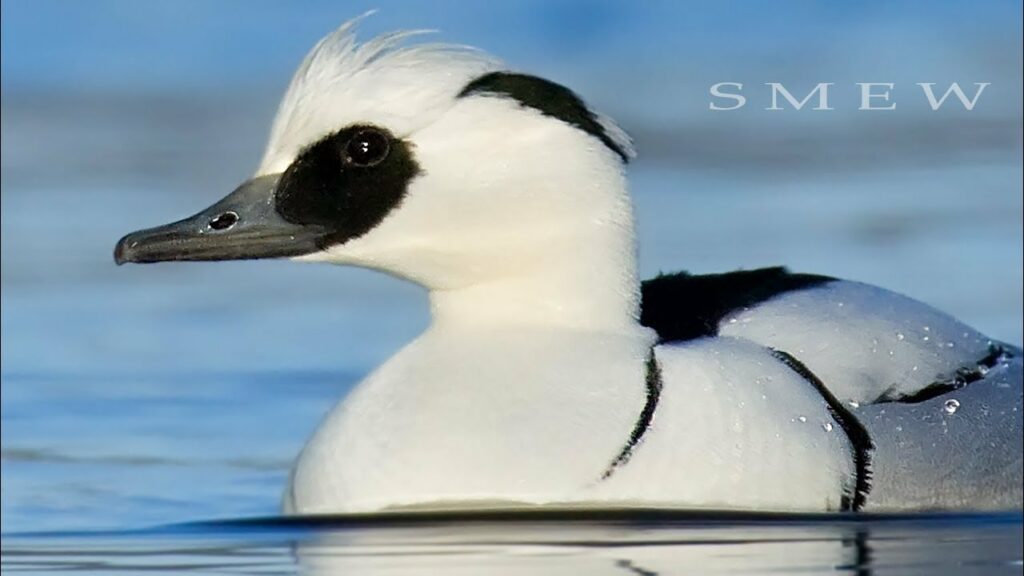
The average size of a smew is 14.8 to 17.4 inches.
They weigh between 15.9 and 22.8 ounces and have a wing span of 22.3 to 27.0 inches.
The birds belong to the subfamily of the sawbill duck and are white in color.
While males have a full white plumage, females resemble Goldeneyes in that they share the male’s black head and back but have a white throat and neck.
A further distinguishing feature of smews is the presence of black patches on their wings.
These smews hail from Europe and Asia. They go to the western Aleutians during the fall and winter seasons.
In addition, they are not common visitors to the Pribilof Islands but rather are more likely to be seen in the Mississippi River Valley, California, the Great Lakes region, or Oregon.
Their favored habitats are freshwater bodies like bays, lakes, and rivers.
These white birds often set their nests close to bodies of water.
Many species of woodpeckers utilize abandoned nests or other sorts of tree cavities as their homes.
The smew will dive for fish, which it will then grab with its beak.
The pupae or larvae of insects and other animals that live in the crevices of rocks are a common food source.
8. Trumpeter Swan

Adult trumpeter swans normally measure between 54 to 65 inches in length, despite the fact that some of the bigger males may surpass 71 inches in length.
The typical weight range for both boys and girls is anywhere between 15 to 31 pounds.
This white bird, in contrast to other swan species, has a dark-colored beak.
The northern regions of the Northwest United States, Canada, and Alaska are home to populations of trumpeter swans that breed in wetland areas, ice-free coastal areas, and interior rivers.
Some areas of Oregon have been purposefully colonized by non-migratory species that were brought there from elsewhere.
The open water wetlands, streams, or rivers are home to these large white birds that swim across the water.
The site of the nest of the trumpeter swan is almost always selected to be in close proximity to water.
It makes use of preexisting structures, such as beaver dams, muskrat dams, beaver dens, artificial platforms, or even teeny tiny islands.
The foundation of their nest is a mound made of aquatic plant material, and the opening may be covered with grass, sedges, or feathers.
During the winter months, adults typically feed on the roots, leaves, and stems of aquatic plants. However, they may also ingest terrestrial waste crops and grasses.
The food of the young consists mostly of very small invertebrates and insects.
9. Tundra Swan

Tundra swans typically stand at a height of 3 feet and have a wingspan of 5 to 7 feet.
They tip the scales at about 13 to 20 pounds.
The tundra swan has all-white plumage. This bird frequently has a black beak with a yellow spot at the base.
Blackness also characterizes its legs and feet.
Tundra swans prefer nesting sites at the water’s edge because the Arctic tundra is wetter.
It’s not only during the winter that these animals make their homes in shallow lakes, sluggish rivers, flooded fields, and coastal estuaries; they do it year-round.
Mound-shaped nests made of moss, tundra plants, grasses, sedges, and lichens are built by both sexes.
As a herbivore, the tundra swan prefers aquatic plants and their rhizomes.
In addition to these, their food may also consist of worms, arthropods, and shellfish.
10. Wood Stork

Storks are large birds that have white feathers covering their bodies and are known as wood storks (33 to 45 inches).
Their wingspan is anywhere from 55 to 72 inches on average. Their wings are also rather long.
Males typically weigh between 5.6 and 7.4 pounds, while girls typically range from 4.3 to 6.4 pounds in weight.
This bird does have a long neck and long legs, like herons; therefore, it is sometimes called a heron.
However, in contrast to herons, wood storks have frightening-looking head that is completely devoid of feathers and jet black in color.
There are breeding populations of wood storks in most of South and Central America, as well as in the Caribbean.
They are most comfortable in subtropical and tropical environments.
You are most likely to come across them in the states of the Carolinas, Florida, and Georgia.
Their natural environment consists of cypress strands and domes, sloughs, mixed hardwood swamps, and mangrove forests.
The nests of wood storks are often constructed in trees that are 1 to 3 feet high and are inundated with water created by sticks and plants.
Prey items for wood storks include a wide variety of animals, including crayfish, fish, frogs, rodents, huge insects, and even tiny alligators.
11. Red Bills Tropicbirds

The red-billed tropicbird typically measures 34 to 41 inches in total length, including the tail streamers that add another 17 to 22 inches.
The length of this bird is 19.2 inches, excluding the tail streamers, and the width of its wings is between 38 and 42 inches.
Its body is mostly white, but its back and wings are covered with black patterns. Also, it “wears” a black mask that makes it seem like a tern.
The red-billed tropicbird is found in the Indian Seas, the tropical Atlantic, the Neotropics, and the eastern Pacific.
Even though it is difficult to see this unusual seabird from dry ground, it is not rare to come across it on the coastlines of rocky islands.
Nesting scrapes on cliff sides are preferred by red-billed tropicbirds because they are close to the birds’ point of launch.
Even though it can’t swim very well, this white bird nonetheless enjoys a diet of fish and squid.
12. Snowy Egret

The length of a snowy egret ranges from 22.2 to 26.1 inches.
They have been known to weigh up to 13.2 ounces, and their wing span may reach up to 39.5 inches.
The difference in size between males and females is quite marginal.
In the late 1800s, the species was almost eradicated from the face of the earth as a direct result of hunting.
There are snowy egrets in the areas of North America, South America, and Central America.
Argentina and Chile are the two countries in South America that are home to these white birds of medium size.
In addition, you may find them in Florida and the West Indies throughout the whole year.
Their natural habitats include moist settings, such as marshes, salt marshes, riverbanks, estuaries, lakesides, and pools, among other types of wetlands.
The nest of the white egret is a shallow platform that is woven together with twigs and reeds.
The majority of the time, it is constructed in bushes, trees, or even on the ground itself, and it is lined with little rushes and twigs.
A snowy egret’s diet may include fiddler crabs, crayfish, fish, shrimp, snails, small lizards, baby frogs, terrestrial and aquatic insects, or aquatic plants.
In addition, the snowy egret may also consume aquatic plants.
13. Snow Geese

The average snow goose is 7.2 pounds and 32 inches long; the largest recorded specimen weighed 9.8 pounds.
The range of its wing span is around 52 to 65 inches.
The lifespan of snow geese has been estimated to be between 13 and 17 years.
Intriguingly, they wait until they’re three or four years old before starting a family.
The snow goose breeds in the Arctic and high Arctic islands and spends the winter in coastal saline bays and marshes, wet grasslands, freshwater marshes, fields, and farms.
In the arctic and subarctic tundra, snow geese often choose nesting sites near water, such as ponds or streams.
The male assists the female in choosing a suitable nesting site.
Plant life, pebbles, and teeny shrubs generally conceal this spot. Marine lyme grass, eelgrass, twigs, birch, sea-lyme grass, leaves, seaweed, and willow are all utilized to construct nests.
The snow geese eat a variety of plants, including sedges, grasses, horsetails, and bulrushes, as well as their leaves, seeds, and roots.
14. North Gannet

The northern gannet is the largest species of gannet and seabird that can be found on the western side of the Palearctic.
It has a wingspan of 65 to 71 inches, ranges in length from 34.5 to 39.5 inches, and weighs 4 to 8 pounds.
Young northern gannets have a more brownish appearance, in contrast to their snow-white adult counterparts, who have black wingtips.
This large, white bird has the ability to dive into the water at a speed of sixty miles per hour, coming down from a height of 98.5 feet.
The beaches on either side of the Gulf Stream in the north Atlantic ocean are breeding grounds for northern gannets.
They have been seen in the Gulf of Saint Lawrence as well as the offshore islands off the east coast of Canada.
Cliffs with ocean vistas are their preferred habitat, although they may also be found on small rocky islands.
The nest of the northern gannet is often constructed at a distance of two to three feet from other gannet nests.
The construction of the nest is a mound composed of seaweed, grass, and dirt; the male droppings hold the building together.
The diet of a northern gannet nearly exclusively consists of fish, although it may also include shrimp and even squid on occasion.
15. Ivory Gull

The ivory gull stands out from the crowd with its brilliant white plumage and striking contrast to its black legs.
Females are almost indistinguishable from males, and both sexes average 17.4 inches in length and 14.3 to 17.5 ounces in weight as adults.
The Arctic is the ivory gull’s nesting ground; however, it may be found in Eurasia, Greenland, and the far north of North America.
Furthermore, it inhibits the far northern parts of the High Arctic.
The bird is often seen on pack ice and edges, especially around headlands and islands.
Ivory gulls have a wide range of options when it comes to where they may set their nests.
These stunning white birds nest on cliffs, islands, and steep mountains in the interior of the country.
Algae, feathers, down, driftwood, seaweed, mud, grass, and lichen are used in construction.
Ivory gulls eat crustaceans and fish from the sea that are often found in areas with pack ice.
They also scavenge the bodies of polar bears and humans killed for food.
16. Royal Spoonbill

The Royal Spoonbill may grow to a maximum height of around 31.5 inches.
The length of its wingspan is around 47.3 inches, and its weight ranges from 3.0 to 4.6 pounds. Because it spends so much time wading through the water, this bird has very long legs.
The Northern and Eastern regions of the Australian continent are completely populated by royal spoonbills.
They call intertidal mud flats, wet grasslands, freshwater and shallow salt marshes, and marshes with both types of water their home.
In addition to this, they will make use of wetlands that have been created by humans, such as salt flats, sewage lagoons, dams, and reservoirs.
The bowl-shaped nest that is built is supported by twigs and sticks that are arranged in a circular pattern.
The Royal Spoonbill uses water plants and leaves to line the inside of its building.
Locations for nesting might be found in the treetops of trees located over bodies of water or among the long reeds and rushes.
These large white birds are carnivores; therefore, their primary diet consists of fish; however, they have also been known to swallow insects and crabs.
17. White Cockatoo

The white cockatoo typically measures around 17 inches in length and weighs between 14 and 28 ounces, with larger males weighing more than smaller females.
In general, the male has a bigger head and beak in comparison to the female, while the color of their eyes may range from brown to black.
Bacan, Mandioli, Kasitura, Halmahera, Tidore, and Ternate are some of the islands in the Indonesian Maluku archipelago that are home to white cockatoos.
They may be found in woods and open woodlands, as well as agricultural districts and mangrove swamps.
These birds are well known for their habit of living in marsh areas.
The white cockatoo often constructs its nest in large tree holes between 18 and 100 feet above the ground.
It utilizes sawdust, wood bark, or other suitable materials that have decomposed in a non-toxic manner and have been appropriated for use.
The white cockatoo’s diet often consists of a wide range of seeds, nuts, and fruits, such as durian, langsat, rambutan, and papaya. In addition to that, they may eat insects.
18. White Ibises

The weight of male white ibises may range from 1.4 to 2.8 pounds, while the weight of female white ibises can range from 1.4 to 1.9 pounds.
The length of the mature male and female birds may vary from 20.9 to 27.4 inches, while the spread of their wings can be anywhere from 35.6 to 41.7 inches.
Significant populations of white ibises may be found in the southwestern, northeastern, and eastern regions of Australia, respectively. Florida, Michigan, and Texas are the three states in the United States that are home to these all-white birds.
They cluster in large groups around bodies of freshwater and saltwater along the coast, as well as mudflats, mangrove swamps, lagoons, rice fields, and marshes.
White Ibises will normally nest anywhere from two to fifteen feet above the ground or water, and they may also sometimes nest in thickets, mangroves, and trees.
Materials for nests built by other pairs of birds are taken without permission. Sticks and, much less frequently, reeds and cordgrass are examples of these materials.
Fish, frogs, crabs, snakes, insects, and crayfish are among the many animals the white ibis eat.
19. American Pekins

Pekins from the United States average a height of around 21 inches.
The male typically weighs 10.5 pounds, and the female could go up to 9.5 pounds at her heaviest.
Pekins have all of their plumage by the time they are eight weeks old and have reached 90% of their mature weight at this point.
On the other hand, it might take them anywhere from 15 to 29 weeks to reach their maximum developmental potential.
The United States of America is home to the largest population of white-winged ducks; however, these ducks may be found in practically every other country on the planet.
Their natural environment consists of farms, ponds, both private and industrial, and parks.
Even while American Pekin hens are quite content to lay their eggs pretty much wherever they don’t seem to object one bit if people construct nesting areas specifically for them.
It is recommended that these ducks use commercial feed that has been formulated expressly for ducks and geese as their principal source of nourishment.
Worms, non-citrus fruits, peas, maize, and non-citrus vegetables are some of the other foods they eat.
20. Little Egret

Despite their name, cattle egrets are really one of the larger kinds of egrets, measuring between 22 and 27 inches in length.
They weigh between 13 and 18 ounces, and their wing span ranges from 36 to 42 inches.
They have black legs and black beaks, but their feet are a delicate yellow color.
Every continent has its own population of small egrets, with the exception of North and South America.
People who call the continents of Southeast Asia, Africa or Australia home during the whole year are considered permanent residents.
In contrast, the small egrets that are seen in Europe are only passing through during the winter.
Little Egrets are semi-aquatic birds that thrive in a variety of settings, including but not limited to lagoons, ponds, canals, flooded plains, and marshes.
The small egret is a species of egret that, like all other egrets, nests in colonies with a variety of other bird species.
The majority of the time, their nests are constructed in bushes or trees and are made of an assortment of sticks and twigs.
The majority of the diet of a little egret consists of fish, followed by insects, mollusks, and worms in that order of preference.
Conclusion
As can be seen above, white birds of different sizes and shapes and with all sorts of unique characteristics may be found in every corner of the world.
Although the snowy egret overcame the near extinction of its species, the gyrfalcon thrives in the hardest circumstances.
The purpose of this article was to provide the reader with the most relevant information possible on white birds.
When you next see one of the listed birds in the wild, may you be able to recognize it without any thought on your part?
FAQ
What are some common types of white birds?
Some common types of white birds include swans, egrets, herons, gulls, pelicans, ibis, and cranes.
Are all white birds the same species?
No, not all white birds are the same species. They come from different families and have unique characteristics and behaviors.
Can white birds be found in different regions of the world?
Yes, white birds can be found in different regions of the world. Some species are native to specific regions, while others are migratory and can be found in different parts of the world at different times of the year.
Do white birds have any unique characteristics or behaviors?
Each species of white birds have their own unique characteristics and behaviors, but some common characteristics of white birds include large size, long legs, and long necks. They are usually graceful and strong fliers.
Are there any endangered or threatened white bird species?
Yes, some species of white birds are endangered or threatened due to habitat loss, pollution, and hunting. Examples include the Whooping Crane, the Dalmatian Pelican, and the Great Egret.
Last Updated on March 22, 2023 by Lily Aldrin
